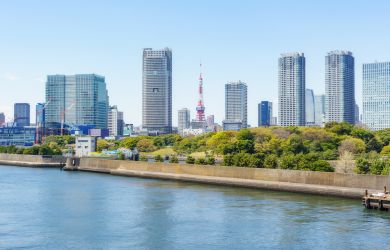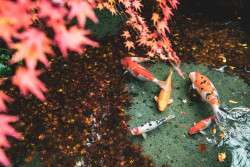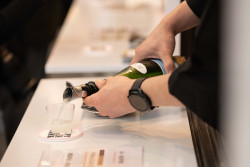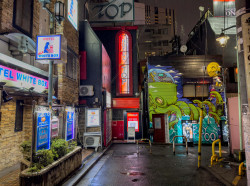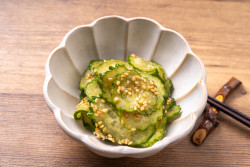
October 14, 2004
Turquoise Baths
Warm, white sand meets an ocean of blues in a remote corner of the South Pacific
By Metropolis
Originally published on metropolis.co.jp on October 2004

Photos by Carlo Niederberger
“The closest island to paradise,” is what the Japanese have called New Caledonia ever since Kei Morimura published the 1966 bestseller of the same name, albeit Morimura’s true inspiration behind the novel had been Ouvea, one of the Loyalty Islands scattered off the northeast coast of the French overseas province’s cigar-shaped main island. Local Melanesians, however, had long before then decided on their own utopian island, one lying 60 kilometers southeast of Grand Terre, and called it such—Kunie, in their native tongue. Then, in 1774, came Captain James Cook, considered the first westerner to lay eyes on the sanctuary, who christened it the Isle of Pines after the ubiquitous Araucaria conifers sprouting into the sky like spines on a porcupine.
We landed on Ile des Pins (the name given by the British explorer has stuck, in French) on a breezy, crisp late afternoon, to find a Melanesian totem pole erected near a quaint terminal devoid of metal detectors. Heading south from the mid-island plateau that is home to the airfield, pine forests and acres of farmland, we drove on the paved but unmarked road that circles the 18km-long and 14km-wide island toward Kanumera Bay, reputed to be one of the most beautiful beaches in the world.
Ivory-white sand grains so fine they slip through even a clenched fist make up the beach that looks out onto the idyllic, half-moon bay filled with live, healthy corals and the diverse marine life it nourishes, while rows of exotic, grotesquely twisted trees arch above a path that travels not far from the water’s edge. After nightfall, the only light guiding us was the moon’s reflection against the water, and the occasional beachside bonfire encircled by Melanesian youths drinking whisky. The island’s remoteness is absolute—but it’s also what once led the French to build a penal colony there to amass the political prisoners from the 1872 Paris Commune revolt.
Ruins of the jails remain today, and rusty, iron pegs lodged into the concrete walls attest to the berths where each prisoner was chained. Amnesty was granted in 1879, and common French criminals replaced the rebels, occupying the cells until 1913. But many of the Parisian patriots had died during their exile on Ile des Pins, and a broad cemetery made of coral stones marks their burial grounds. “Not even the sheer beauty of the island took away the grief of being so far away from our loved ones,” reads a plaque on the memorial, written by a 20-year-old on leaving the island having helped build the monument for his fallen comrades.

But unlike New Caledonia’s Grand Terre, which underwent rapid growth especially in the capital city of Noumea, thanks to the discovery of the island’s massive nickel deposits, Ile des Pins remained in the backwater, and Prison Island soon turned into Paradise Island, as vacationers began to set foot onto its unspoiled shores. Today, while some prefer to laze within the luxurious confines of the five-star Le Meridien, the more active can trek, cycle or drive to take in the sights, from the village of Vao, the island’s hub where schoolchildren were performing a Melanesian ritual dance the morning we visited, to the colossal limestone cave named after the legendary Queen Hortense, the island’s ruler in the mid-19th century who spent a year in darkness hidden amid immense stalactites during a tribal war.
One of the more popular tours on Ile des Pins, however, begins aboard a pirogue, a traditional Polynesian outrigger canoe that is instantly recognizable by its broad, triangular sail. Our vessel, which to our amusement was equipped with an outboard engine—a testament to modernization—sailed from the Bay of Saint Joseph, a tribal fishing ground, and into the Bay of Upi, with a dolphin playfully leading the boat for several minutes. At the end of the journey, we anchored near a beach and began the hike through the dense jungle, finally reaching the Bay of Oro and the famed piscine naturelle (natural pool), a deposit of channeled seawater that turned from aqua blue to turquoise and finally sapphire at its deepest point.
It was a dazzling aquarium where each species held its own territory; schools of silverfish and snapper chased pieces of baguette chummed by snorkelers in the sandy shallows and families of clownfish peered out of anemones inches below the surface, while a group of sizable batfish lolled at one end of the pool and a myriad of tiny, luminescent bluefish evaded the stare of a lone barracuda at the other. And behind the piscine loomed a row of the ever-present pine trees, where native birds flew around the treetops chirping the sounds of paradise.
Aircalin (www.aircalin.jp) operates five flights weekly from Narita to the New Caledonian capital of Noumea, and Air Caledonie (www.air-caledonie.nc), based at Noumea’s smaller domestic airport, links the city with Ile des Pins and other domestic destinations. Oure Lodge (www.ourelodge.com) on Ile des Pins, built last year, offers dozens of stylish, state-of-the-art bungalows beside Kanumera Bay, while the Le Meridien Ile de Pins (http://lemeridien.com/new_caledonia/ile_
des_pins/hotel_nc1655.shtml), popular with honeymooners, is located across the island near the Piscine Naturelle and offers five-star accommodation. Rental cars (manual transmission/left-hand-drive only) are the best means to venture around the island, and most gîtes (cottages) or hotels either provide, or make arrangements for, vehicles.
[geo_mashup_map]
